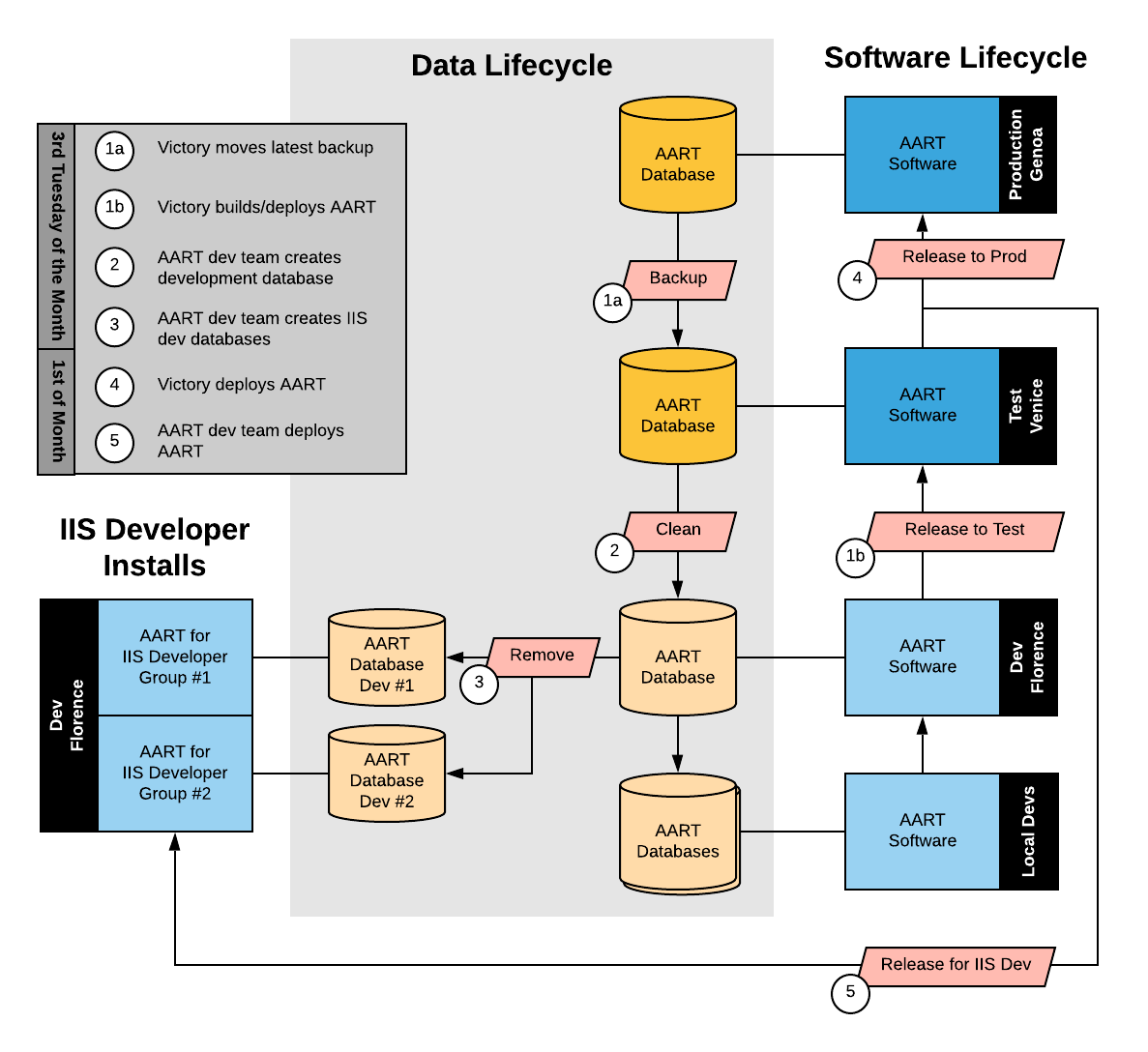Florence Test Server
AART Dev Release
Log InThe AART Development team releases new versions of AART weekly and these are deployed here in preparation for testing.
AART release process: 
The AART Development team releases new versions of AART weekly and these are deployed here in preparation for testing.
AART release process: 
Demonsrates the HL7 functionality of IIS, incluiding both current and future standards. The IIS Sandobox is used primarily as a testing target for AART, to verify that the testing framework is working properly. Secondarily it is used to verify feasibility of adoption of new standards, such as FHIR.
Demonstrates HL7 and FHIR functionality of an EHR system that can connect to the IIS Sandbox.
The original testing application, it has now been replaced by AART. It still has some functions that are useful in this format. The application is still kept up-to-date as parts of it are still being used by AART and the IIS Sandbox.
The KHIE adapter was used to connect to the Kentucky Health Information Exchange. They now support the CDC WSDL so this project is now legacy.
Supports testing of HL7 format and CDC WSDL. The official tool is hosted by NIST and supports certification of EHR systems. The AIRA version has the same content and includes an AIRA specific profile for acknowledgements.
A beta project to create a generic tool for modifying HL7 v2 messages for testing. This project may eventually replace the message modification logic currently used in AART from the SMM/Tester project.
Supports the analysis of data at rest in an Immunization Information System.
Legacy project that provides support for daily project management.
Supports matching critical concepts. These projects can be included in other demonstration projects to perform basic matching services.
Links to older open source projects.
Guide for defining a standardized interface for an immunization decision support engine. The working guide is the most recent version that is being proposed for the next ballot.
Not recently updated. Originally designed to verify and implement the work of the CDSi project.
A legacy immunization forecaster that was originally created by Texas Children's Hospital.
Support analysis and comparison of forecasters. Preceded the NIST FITS and many of its functions have been replaced by FITS.
Supports testing of immunization clinical decision suport engines.
Analyzes the quality of data received by an IIS in HL7 format. Currently not available, but will be put here.
Fake patient data generated on October 9, 2021. 50,000 patients, 307,967 immunizations. Children are simulated to receive typical immunizations for their age. Adults are simulated to receive COVID-19 vaccinations, with about 1 in 7 receiving only one dose.
Fake patient data generated on November 6, 2021. 200,000 patients (0-2 years old), 2,901,323 immunizations. Children are simulated to receive typical immunizations for their age.
Fake patient data generated on June 15th, 2022. 1,000 patients of all ages with immunizations. Half of adults receiving COVID shots moved between doses 1 and 2
Fake patient data generated on December 19, 2022 to support population of tests systems to support bulk data query.
HL7 v2.5.1 VXU format:
100 Adults with One Pfizer Covid vaccine (zipped) 1,000 Adults with Two Moderna vaccines (zipped) 10,000 Adults with Two Moderna vaccines (zipped) 100,000 Adults with Two Moderna vaccines (zipped) 1,000,000 Adults with Two Moderna vaccines (zipped)CSV format:
100 Adults with One Pfizer Covid vaccine (zipped) 1,000 Adults with Two Moderna vaccines (zipped) 10,000 Adults with Two Moderna vaccines (zipped) 100,000 Adults with Two Moderna vaccines (zipped) 1,000,000 Adults with Two Moderna vaccines (zipped)